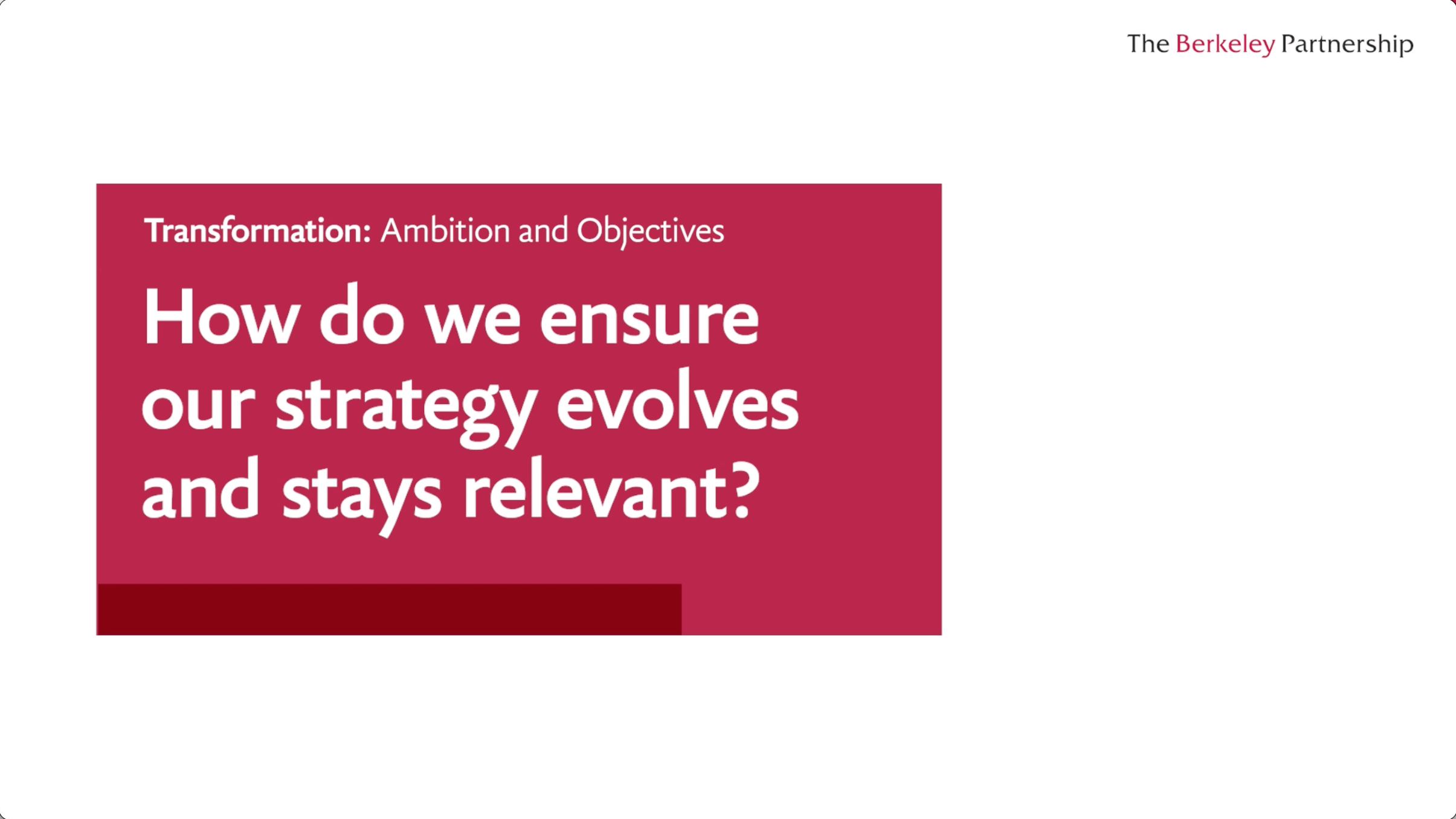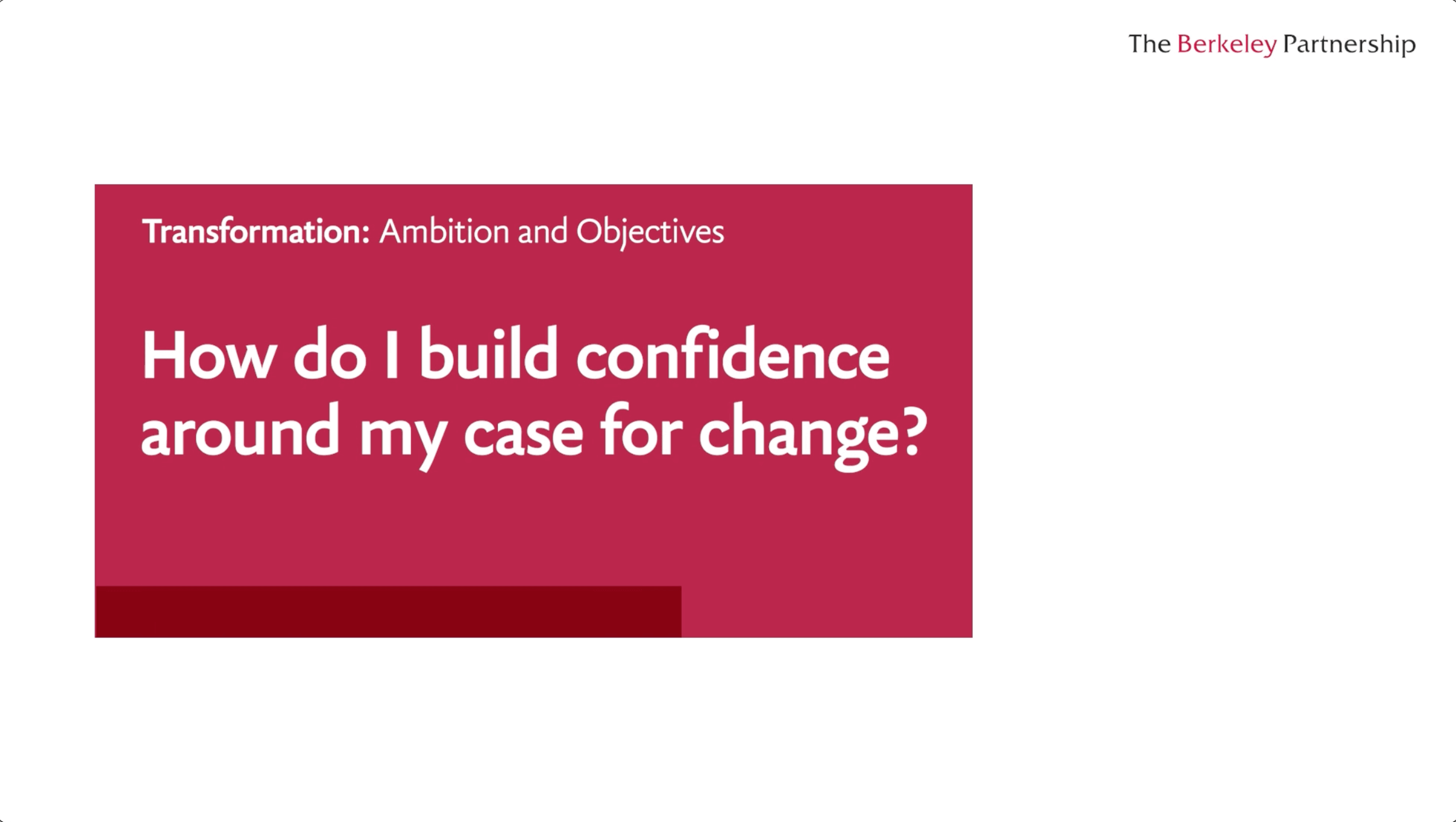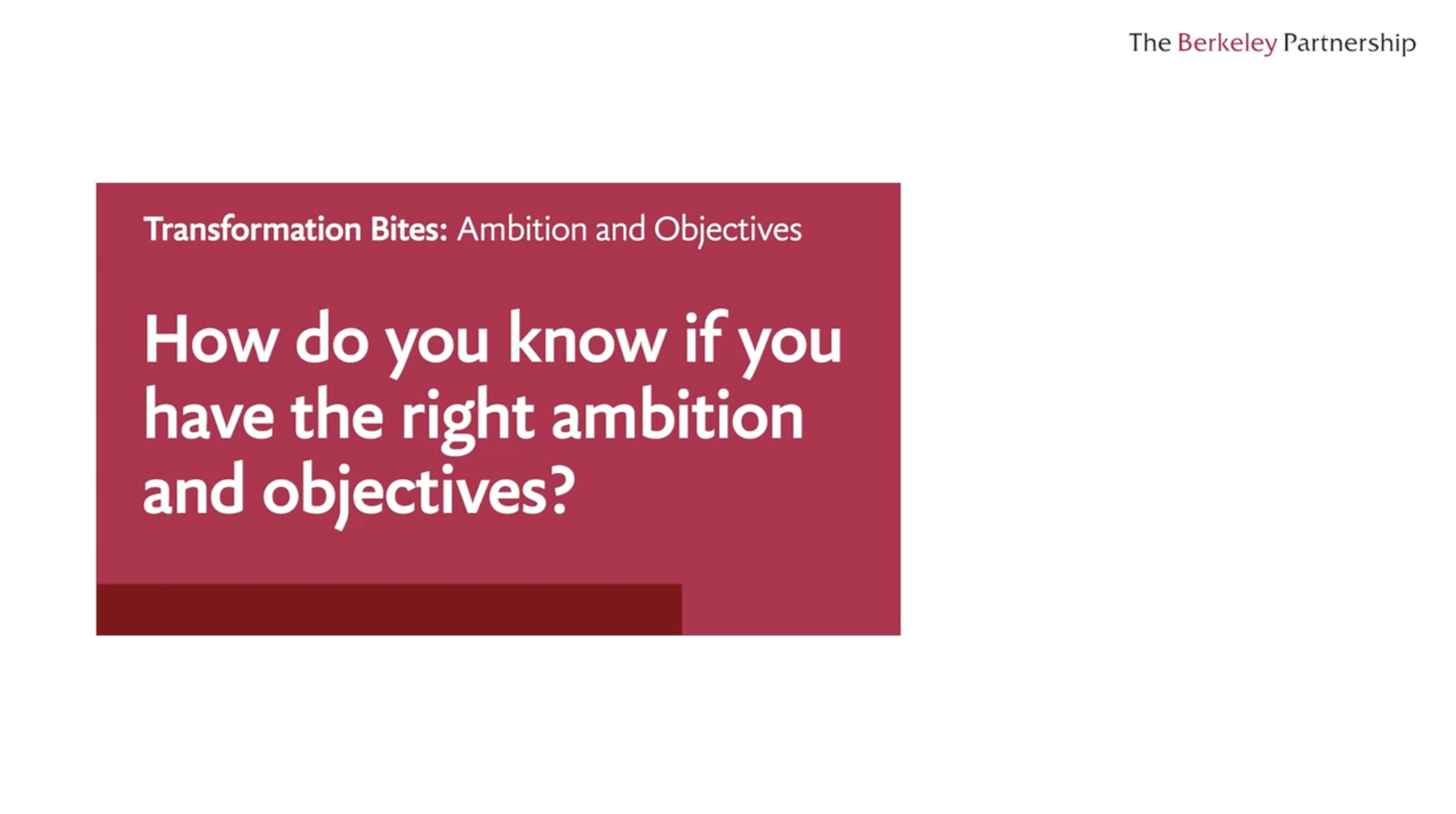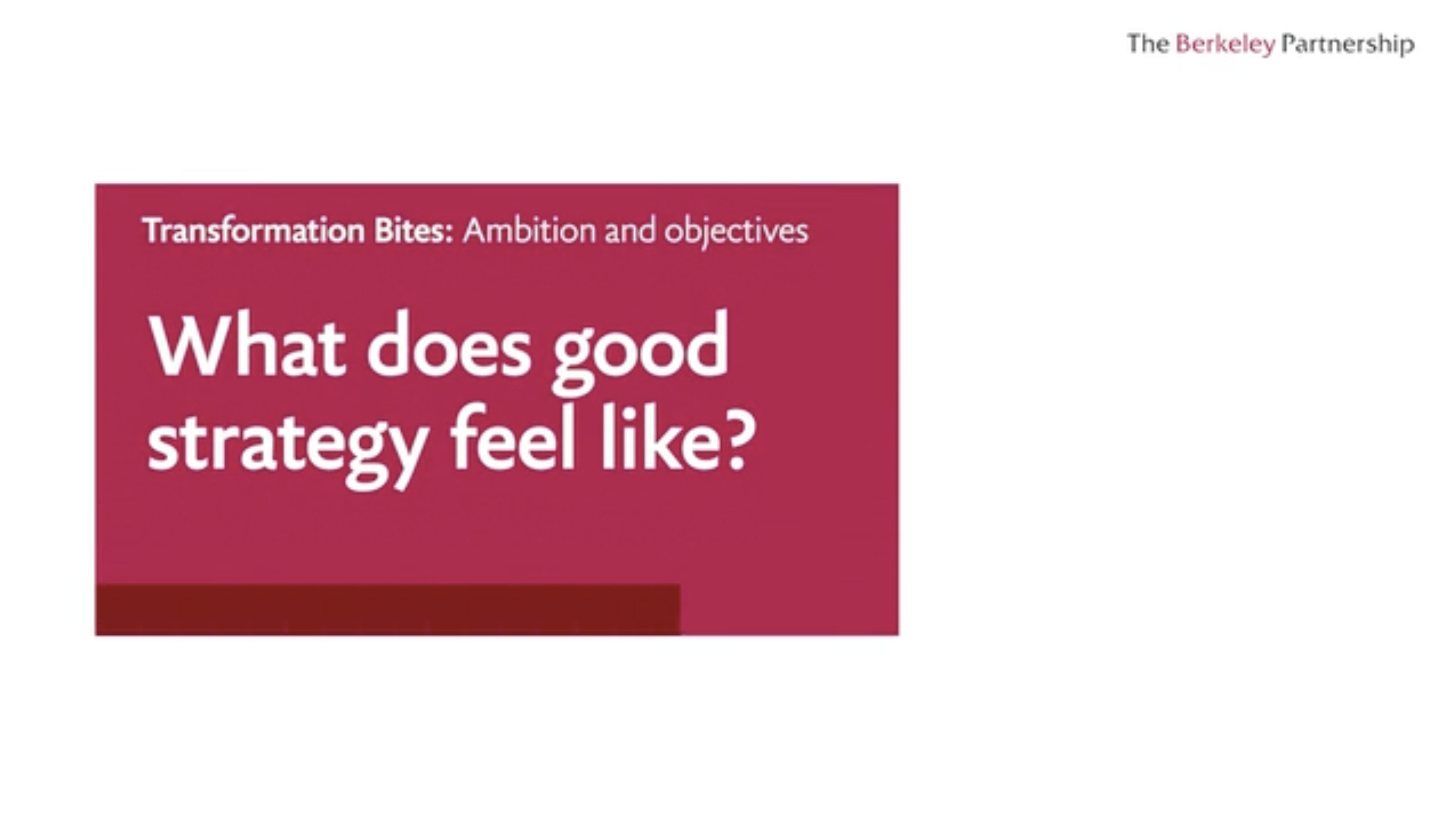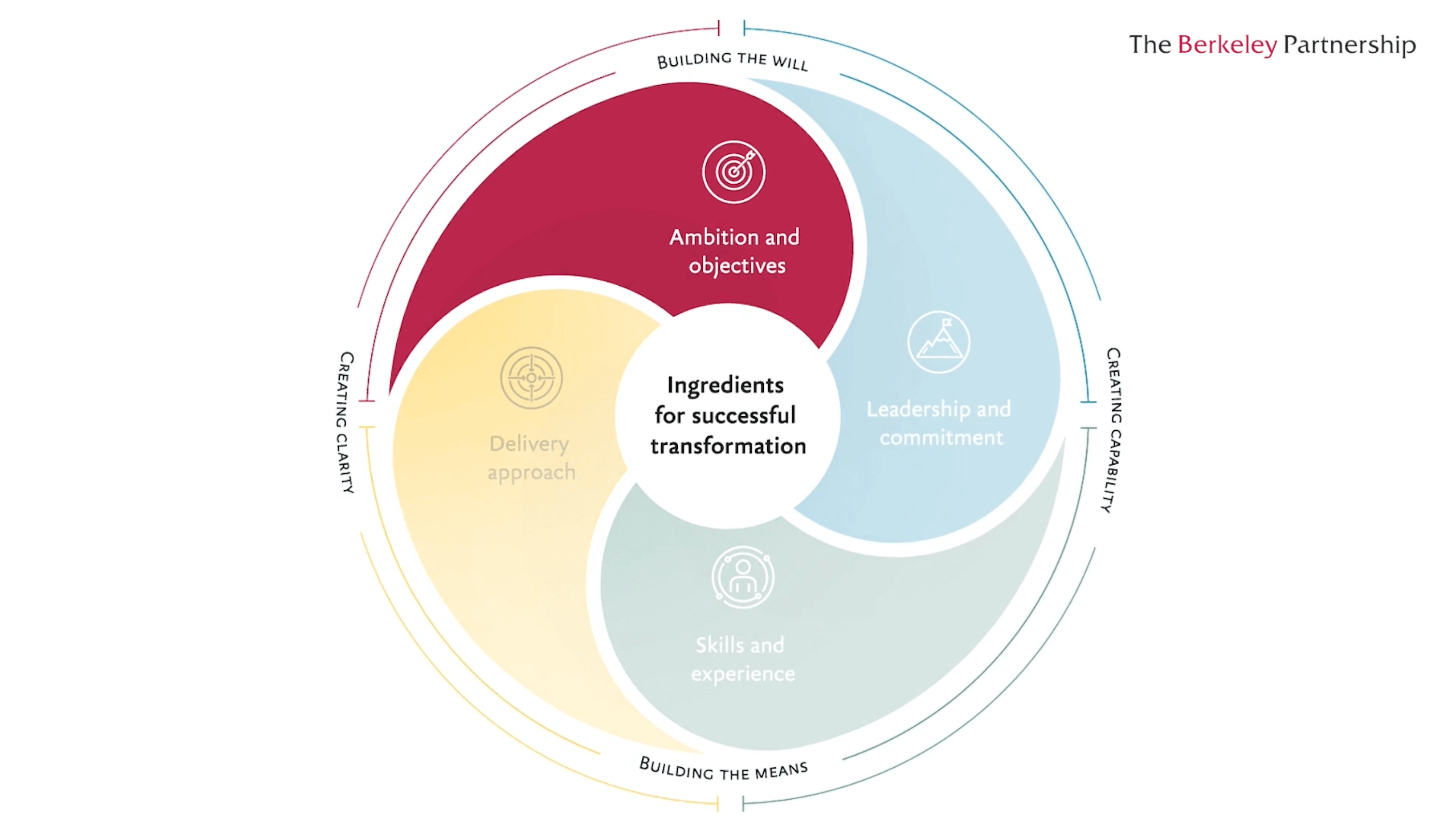
Neil: Great strategy, whether it's business-wide or function-specific, is about stretching your organisation and setting it up for future success. But once that future vision has emerged, we often find that clients struggle to translate big lofty ambitions into a set of more pragmatic, tangible interventions.
Elizabeth: This really comes down to balancing ambition with realism, creating something that's actionable and fit for purpose, but which still allows you to achieve a set of really impressive outcomes which change your organisation for the better.
Neil: A successful strategy is always deeply rooted in business outcomes. One of the biggest indicators of success for a transformation programme is the extent to which the team is squarely focused on delivering a set of clearly articulated, well understood, business-led benefits.
Elizabeth: But relentless pursuit of a strategic ambition doesn't just mean targeting every single one of those business benefits simultaneously. To progress at pace and demonstrate success along the way, you'll have to prioritise ruthlessly based on concrete evidence of what's going to deliver real value.
Neil: It's often helpful to start with something tangible, perhaps something low risk, or easier to execute. This helps showcase your transformation capabilities and demonstrates to your organisation that you're able to deliver meaningful change. It's also helpful to learn lessons and make mistakes early on before you reach for more ambitious targets. Delivering any sort of change is a social process. If you get a broad range of stakeholders enthused about your ambitions from the outset, you're getting them ready to go on this journey with you and advocate for what you're trying to achieve throughout the organisation.
Elizabeth: The best way to get people on board is to show them the value that underpins your ambitions. Show them evidence of the positive change you're seeking to effect for your organisation and just get them excited. Share your enthusiasm.
Neil: Keeping things practical, it's always important to establish a timeframe for delivering your ambitions. Capital intensive industries will likely take a longer-term view, while more dynamic sectors are more likely to set a three-year strategy, keeping one eye on market developments to ensure their objectives remain relevant over time.
Elizabeth: Your ambitions may be huge; the challenges ahead of you may be even bigger. But as long as you've clearly articulated and evidenced the case for change, have a pragmatic plan in place and can free up the right resources to execute, you can be confident that your ambition remains deliverable.


